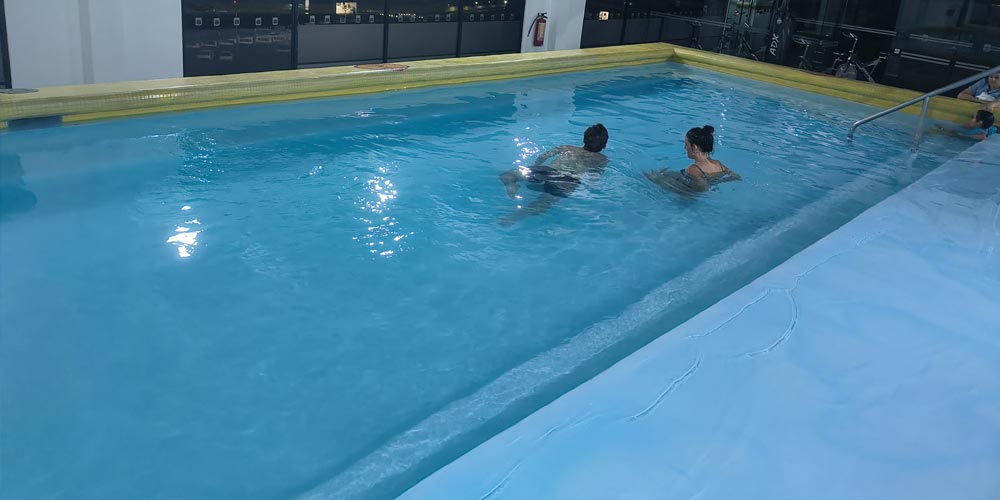Mivel a medence vize állandóan változó, fontos rendszeresen ellenőrizni a kémiai egyensúlyt, és a megfelelő mennyiségű adalékanyagot hozzáadni.medencevíz vegyszerekamikor szükséges. Ha a medence vize zavaros, az azt jelzi, hogy a vegyszerek nincsenek egyensúlyban, ami a víz egészségtelenné válását okozza. Ezt időben meg kell figyelni és tesztelni kell.
1. Magas pH-érték
A pH-érték közvetve összefügg a medencevíz zavarosságával. Ha a pH-érték gyakran túl magas, az csökkenti a szabad klór hatékonyságát.
A pH-érték pontos tesztelése és az ajánlott tartományon belül tartása kulcsfontosságú a kémiai egyensúly ingadozásainak kiküszöböléséhez.
Mi a biztonságos pH-érték úszáshoz?
Egy uszoda vizének megfelelő pH-értéke 7,2 és 7,8 között kell, hogy legyen, az ideális érték 7,6.
Hogyan lehet egyensúlyba hozni egy medence pH-értékét?
A pH-érték csökkentéséhez használnod kell egypH mínuszMint például a nátrium-hidrogén-szulfát
Ha a medence vize túl savas, akkor használnod kell egypH plusz, például nátrium-karbonát.
2. Csökkentett szabad klórszint
Amikor a szabad klór szintje csökken, a medence vize irritálóvá válhat, és a nem elegendő mennyiségű rendelkezésre álló klór miatt zavarossá válhat.
Ez azért van, mert a klór nem képes hatékonyan elpusztítani a baktériumokat és más élőlényeket.
Az alacsony szabad klórszintet a gyakori használat, a heves esőzések (amelyek hígítják a klórt) vagy a forró napsütéses napok (az ultraibolya sugarak oxidálják a szabad klórt) okozzák.
Honnan tudod, hogy a klór kiegyensúlyozatlan?
A szabad klór szintjét legalább naponta kétszer ellenőrizni kell, és el kell végezni a megfelelő beállításokat, különösen a forró nyári időben és a medence gyakori használatakor. Miután zavarossá válik a víz, kérjük, végezzen ütőkezelést. Minél nagyobb a szabad klór és a teljes klór közötti tartomány, annál több kötött klór (klóramin) van a vízben.
3. Magas teljes lúgosság
A medencevíz teljes lúgosságát gyakran „puffernek” nevezik. Segít a víznek ellenállni a pH drasztikus változásainak.
A teljes lúgosság a víz savak semlegesítésére való képességének mértéke, ezért fontos része a pH-érték egyensúlyának. A magas lúgosság általában megnehezíti a pH csökkentését.
Magas pH-jú környezet túlzott kalciumszinttel, ami a víz zavarosodását vagy „vízkő” képződését okozhatja, ami kemény, kérges ásványi lerakódás.
Hogyan kell beállítani a teljes lúgosságot
A teljes lúgosság növeléséhez adjunk hozzá pH-puffert (nátrium-hidrogén-karbonátot)
A teljes lúgosság csökkentéséhez adjunk hozzá sósavat vagy pH mínuszt az egyik sarokba. Ez hatékonyan csökkenti a teljes lúgosságot.
Végül győződjön meg arról, hogy a teljes lúgosság a kívánt tartományon belül van, hogy elkerülje a pH-emelkedést és a kalciumkő képződését.
4. A kalcium keménysége túl magas
Ha a kalcium keménysége túl magas, a víz zavarossá válik, és függetlenül attól, hogy mennyi erőfeszítést teszünk a víz tisztítására, a víz zavaros marad.
Hogyan csökkenthető a kalcium keménysége
Ha a kalciumkeménység túl magas, adhat hozzá a medencéhez megfelelő kelátképzőt, vagy öntsön annyi friss vizet a medencébe, hogy hígítsa a kalciumtartalmat.
A fentiek a medence karbantartása során leggyakrabban elvégzett tesztek. Minden vegyszert a használati utasításnak megfelelően kell elhelyezni. És gondoskodjon a kezelők biztonságáról. Szükség esetén vegye fel a kapcsolatot a medence vegyszer szállítójával.
Közzététel ideje: 2024. június 13.


